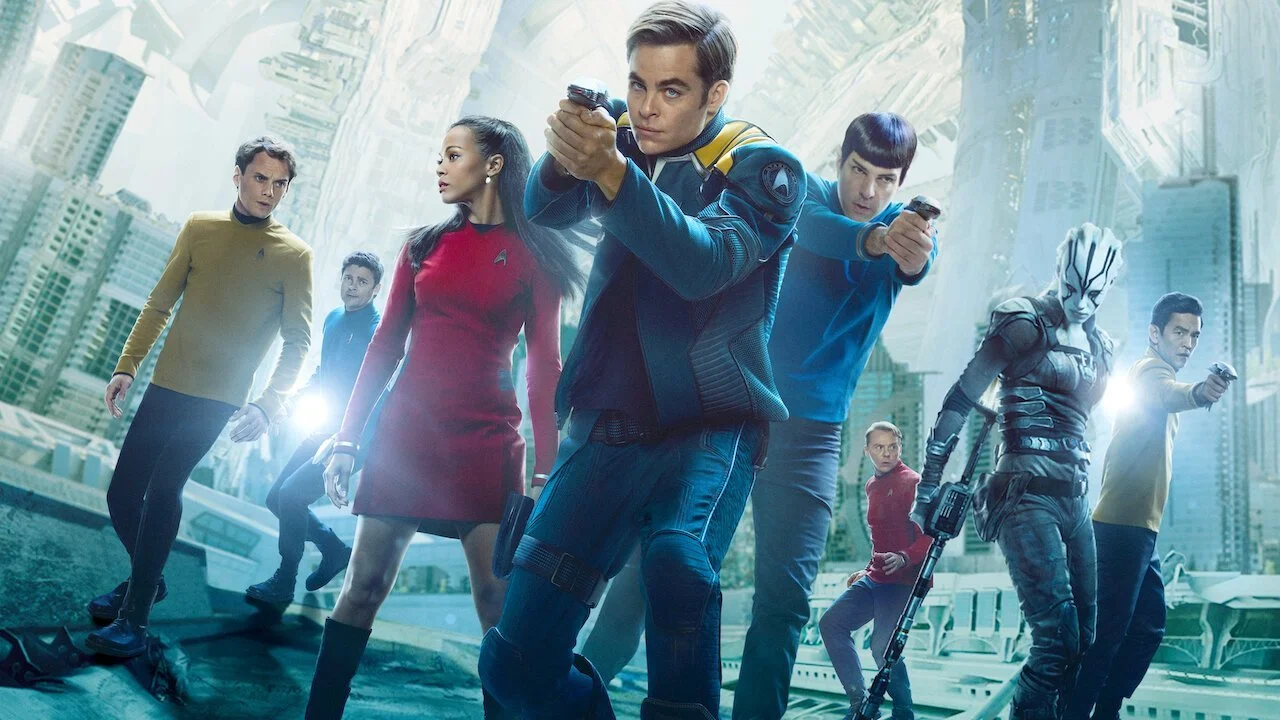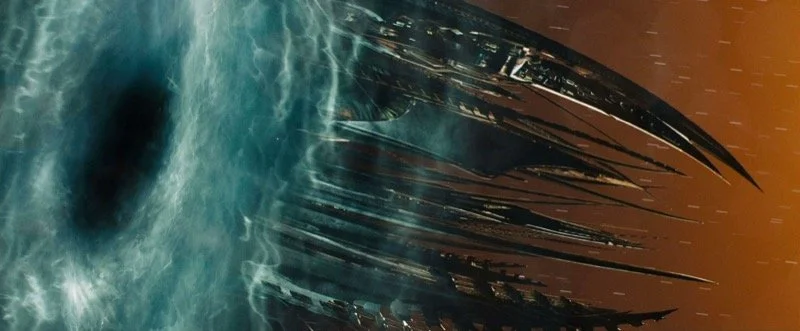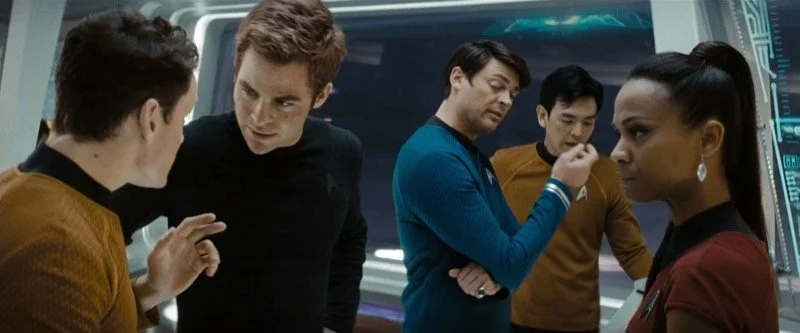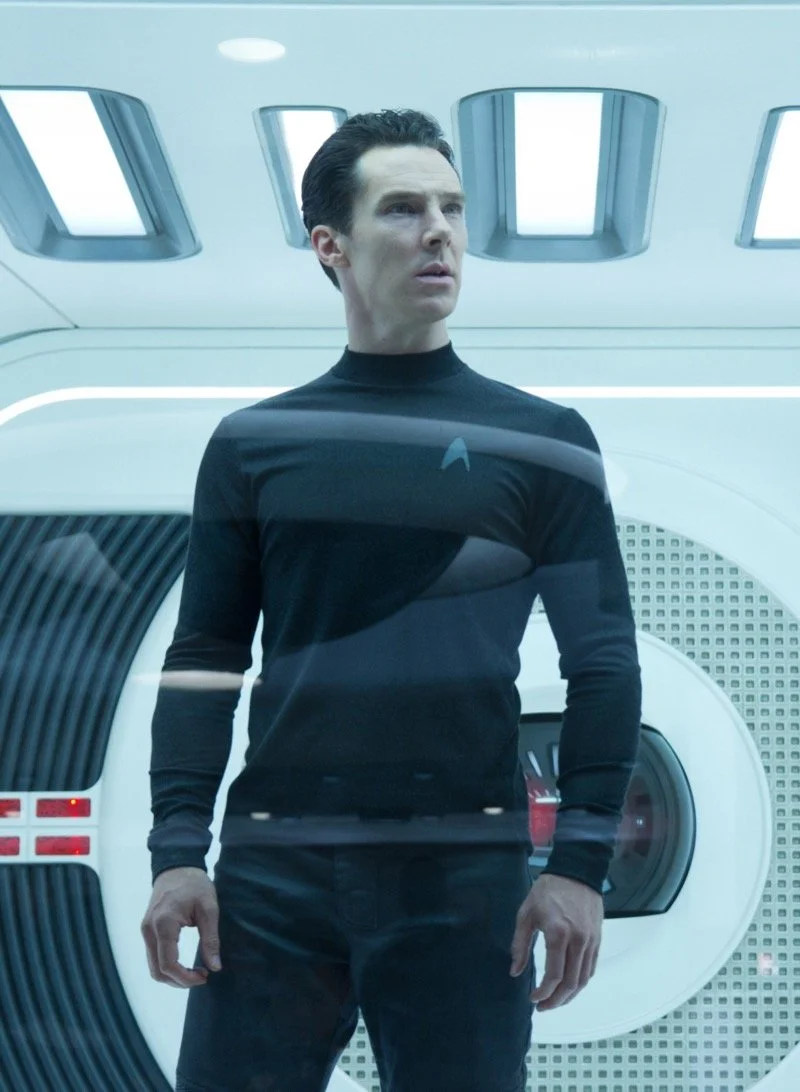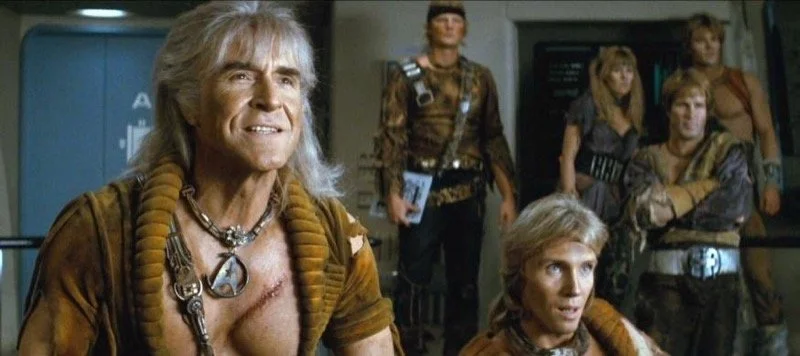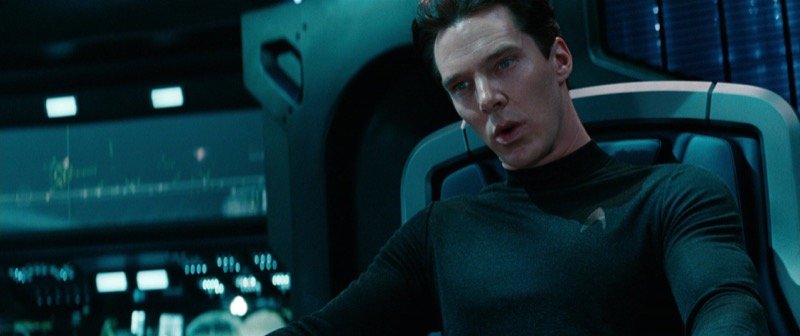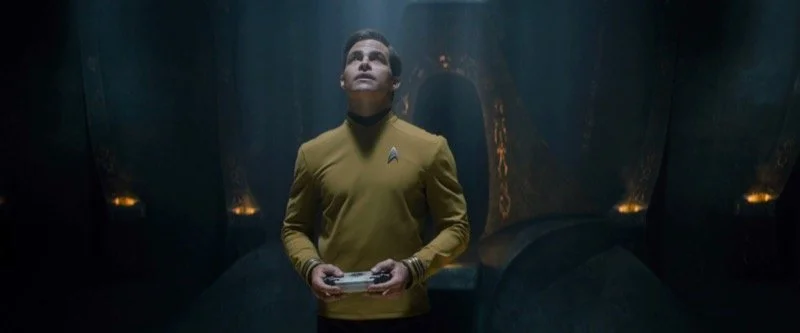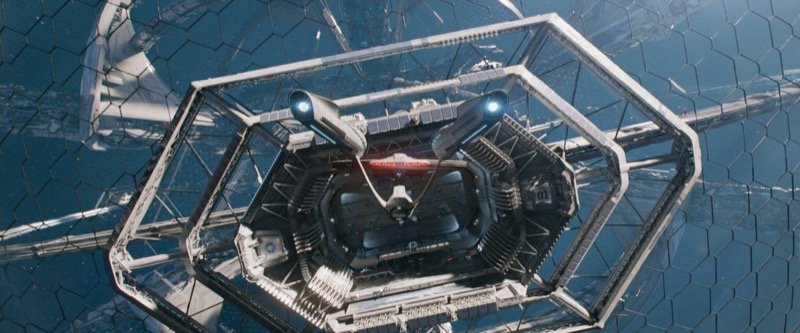How The 'Star Trek' Kelvinverse Movies Parallel Prime Trek
Image Source: WallpapersDen
In 2009, Director J.J. Abrams brought the Star Trek franchise back into the movie theaters, seven years after the final The Next Generation movie, Nemesis, ended The Next Generation era of films and four years after the last remaining Star Trek series on the air, Enterprise, ended abruptly after only four seasons. The first of the new J.J. Abrams Star Trek films, Star Trek (2009), was both a reboot and alternate timeline with the ability to re-introduce and tell new stories about classic Star Trek original series characters, such as Kirk, Spock, McCoy, et. al.
Colloquially, the new movies were designated as being part of the “Kelvinverse,” as the U.S.S. Kelvin, which Kirk’s mother and father served on, was destroyed by a vengeful Romulan from the future, essentially creating the alternate Star Trek timeline that continued for the rest of the movie series. While the stories featured in the three Kelvinverse movies, Star Trek (2009), Star Trek: Into Darkness (2013), and Star Trek: Beyond (2016) are mostly original, they are greatly influenced and, in some ways, parallel the original “Prime” Star Trek movies and series that came before them.
RELATED:
Star Trek (2009)
Nero’s ship, The Narada, emerges from a black hole to encounter the U.S.S. Kelvin
Image Source: Trekcore
While the storyline and events of Star Trek (2009) are not tied closely to any previous Star Trek movies, it is the movie that bridges the original “end” of the “Prime” Star Trek timeline, with the new movies series, by featuring a cataclysmic post-Nemesis event, the destruction of the Romulan homeworld by a supernova. Attempting to stop the supernova before it engulfs more of the galaxy, a heavily-modified Romulan mining ship, The Narada, and Ambassador Spock, reprised by Original Series actor, Leonard Nimoy, inadvertently get sent back in time over a century before.
The Narada and its vengeful Romulan captain, Nero, massively altered the original “prime” Star Trek timeline by killing Kirk’s father before his time, as well as destroying Spock’s homeworld, Vulcan, two decades later, thus endangering the future of Spock’s people. Ultimately, Kirk, young Spock, McCoy, Uhura, and the rest of the crew from The Original Series eventually came together aboard the Enterprise and defeated Nero, and saved Earth from his plans for its destruction.
A young Kirk and Enterprise crew
Image Source: Trekcore
Star Trek: Into Darkness
Khan Noonien Singh (Into Darkness)
Image Source: Collider
Of all of the Kelvinverse movies, Star Trek: Into Darkness is tied the heaviest to Star Trek: Original Series, essentially being a quasi-reboot/re-invention of Star Trek II: The Wrath of Kahn, as well as The Original Series episode that set the film up, Space Seed, with the main antagonist being an alternate version of Khan Noonien Singh, played by Benedict Cumberbatch. Khan was originally a genetically engineered “superman” who ruled over large parts of Earth during the 1990s and was eventually overthrown and fled into space until he and his followers were later found and revived by the USS Enterprise.
In Space Seed, Khan and his followers tried and failed to capture the Enterprise and were subsequently exiled to a remote planet to attempt to colonize it. Fifteen years later, in Star Trek II: The Wrath of Khan, Khan and his followers escaped their exile and commandeered another Federation Starship, and attempted to get revenge on Kirk for their exile. Spock ultimately sacrificed his life to save the Enterprise from being destroyed by Khan detonating a superweapon, in a final suicidal attempt to kill Kirk.
Khan Noonien Singh and crew (The Wrath of Khan)
Image Source: Engadget
Khan was once again the antagonist in Into Darkness, albeit, waging his own private campaign of retribution against a renegade Starfleet Admiral and his shadow organization, Section 31, who Khan believed killed the rest of his followers. Section 31 was introduced as a shadowy organization in Star Trek: Deep Space Nine, often involved in questionable and/or illegal actions, ostensibly in defense of the Federation.
After using Kirk to gain control of a prototype Starfleet vessel, Khan turned his guns on the Enterprise, leading to Kirk sacrificing himself, instead of Spock, to save the Enterprise from destruction. Khan also threatened to destroy the Enterprise’s life support systems, suffocating the crew, a gambit that Khan used to capture the Enterprise bridge crew in Space Seed. Thematically, Into Darkness, like The Wrath of Khan, also addresses the subject of death and mortality and how the main characters deal with it.
Khan takes control of the U.S.S. Vengeance and threatens the Enterprise (Into Darkness)
Image Source: Trekcore
Star Trek: Beyond
Kirk attempts diplomacy, with mixed results (Beyond)
Image Source: Trekcore
The third and final Kelvinverse movie (at least as of right now), Beyond, features some important story beats that somewhat parallel the third Original Series movie, The Search For Spock, chiefly in terms of the fate of the Enterprise. In Star Trek III: The Search For Spock, Kirk and most of his senior officers hijacked the soon-to-be-decommissioned Enterprise to find and preserve Spock’s body, which had been previously laid to rest on the newly created Genesis Planet. In the process of attempting to return to the planet, the Enterprise encounters renegade Klingons, and a brief battle with them leaves the Enterprise adrift and vulnerable. Instead of allowing the Klingons to capture the ship, Kirk orders its self-destruction, temporarily stranding the crew on the Genesis Planet.
The Enterprise arrives at Spacedock (The Search For Spock)
Image Source: Trekcore
In Beyond, the Enterprise is viciously attacked by hostile aliens while investigating a distant region of space, forcing a hasty evacuation of the ship, and marooning them on an unknown planet with the hostile aliens. The destruction of the Enterprise also results in an Enterprise-D-esque saucer separation sequence, which results in the Saucer eventually crashing down on the planet, a la Star Trek: Generations. The Enterprise visiting a remote starbase in Beyond earlier in the movie echoes the scene of the Enterprise in The Search For Spock docking at Earth’s orbiting Spacedock. This also seems to be subtly referenced in Beyond’s musical score (“Night On the Yorktown”), as composed by frequent Abrams collaborator, Michael Giacchino.
Beyond also has Kirk wrestling between his conflicting desires of continuing to command the Enterprise and accepting a promotion to Admiral, which he struggled with in The Motion Picture and The Wrath of Khan. Spock also wrestles with his desire to continue with the Enterprise and what he feels is his obligation to serve his people after he learns that the elder Spock recently passed away. The tension between Spock’s human self and his Vulcan self has been a recurring theme for Spock in The Original Series and beyond.
The Enterprise arrives at Yorktown Station (Beyond)
Image Source: Trekcore
READ NEXT:
Source(s): YouTube


